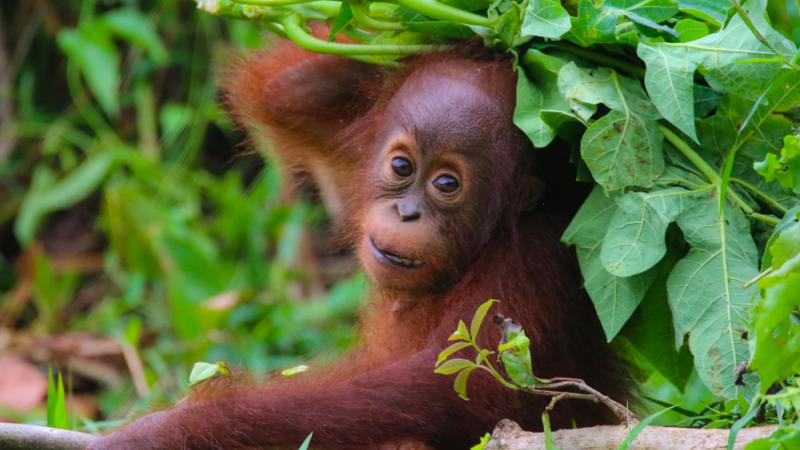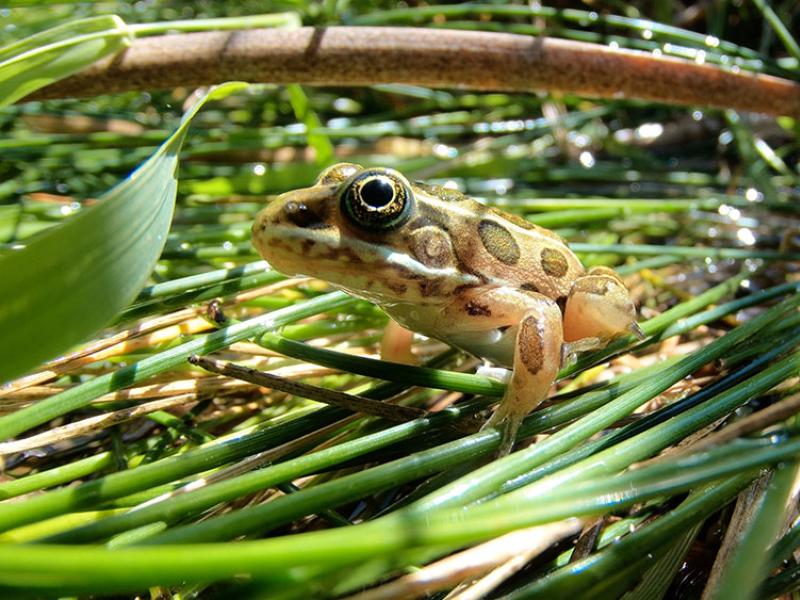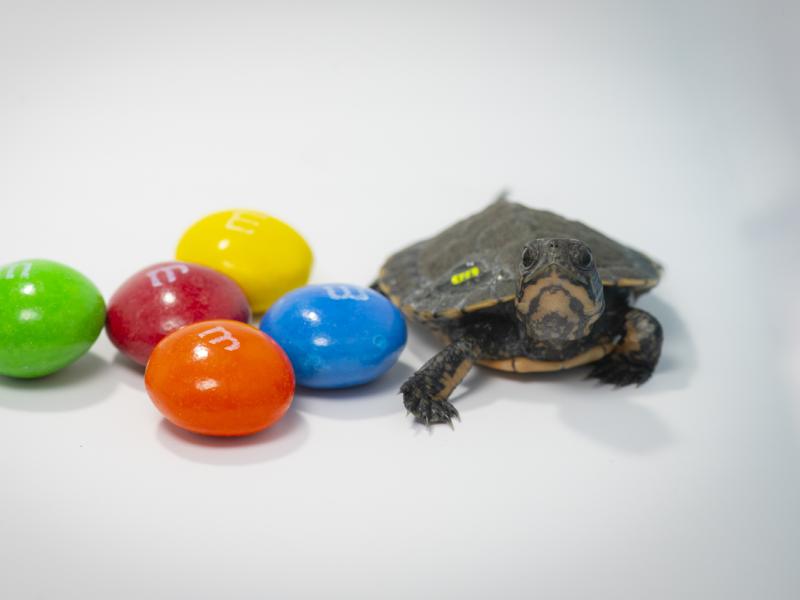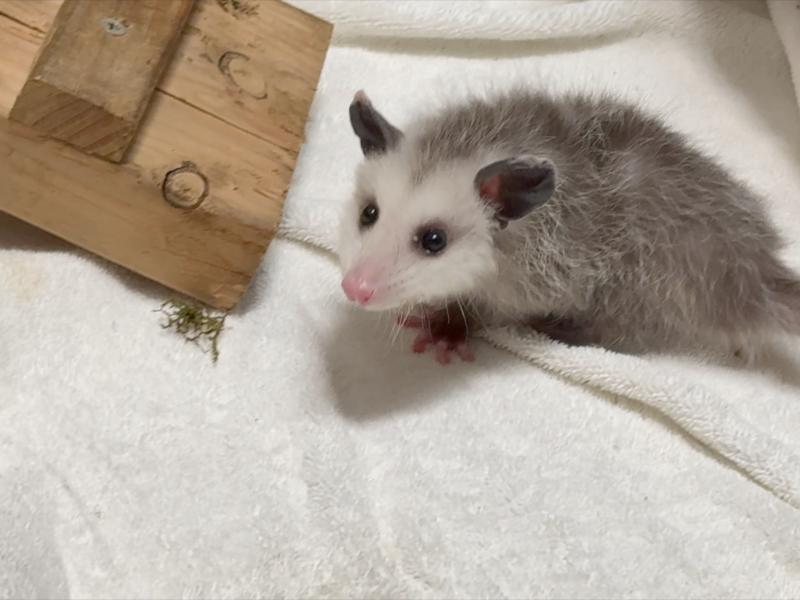Using natural behaviors to improve animal welfare: A Q&A with Barbara Heidenreich

Whether it’s health care, habitat design, diet or enrichment, animal welfare guides every decision made at the Oregon Zoo. Barbara Heidenreich, a world-renowned animal-behavior specialist, recently sat down with the zoo to discuss the important role training plays in animal well-being. Heidenreich — who has trained thousands of animals, from rats to rhinos — works with animal-care professionals, pet owners and conservationists to help foster the human-animal bond. Recently, she and the zoo have collaborated to help rescued orangutans in Borneo return to the wild.
Oregon Zoo: Why is animal training important?
Barbara Heidenreich: We train animals in zoos and other facilities for lots of different reasons. One of the main ones is training them to cooperate in their own medical care so it can be stress-free. We also train animals to make day-to-day care easier, we can train them to address behavior issues and we can train them to be participants in conservation education programs.
Training can be a lot of fun for animals, so it's enriching in that way. We also train animals for projects, like studies on cognition or how they process different things. For example, here at the Oregon Zoo studies done with the polar bears can give us information that we can use to help protect animals out in the wild.
OZ: What style of training do you use?
BH: I like to describe the kind of training I do as force-free animal training, because we're focused on positive reinforcement and having the animals be voluntary participants in the training.
OZ: How does positive reinforcement training work?
BH: One of the cool things about training with positive reinforcement is that it creates eager participants, because we're usually delivering something that the animals really enjoy. It might be a favorite food item, or sometimes we use tactile rewards — like a scratch on the butt or something — and they know that that good thing is going to happen if they participate.
The other part that's really important is that they always have the choice to participate. If an animal doesn't want to participate in training that day, they don't have to, they can go do whatever they were doing. But if they choose to participate, really good things are going to happen.
OZ: What are some common misconceptions about animal training?
BH: One common misconception is that we're forcing animals to do things, or that it's not natural, but everything about animal training is based on basic laws of nature. We all do things to gain things we like. It's very natural for an animal to learn to do something to acquire something that they like. We're just using the laws of nature to improve animal welfare.
OZ: Let’s talk about your work in Borneo. How do you go about training an animal that will be released back to the wild?
BH: I've been really fortunate to work with the Oregon Zoo on a conservation project in Borneo where we’re training quite a few orangutans to prepare them for release, or to improve their conditions if they are going to be living in the sanctuary. Training an animal to be prepared for release is different in the sense that they need to learn how to acquire food, and they may need to learn independence and not be so dependent on the people that are caring for them.
When you're directly having an impact on animals that have the potential to be released in the wild, that's about as good as it gets.
OZ: What do you say to people who think animal training is just about teaching animals to do cute tricks?
BH: Some of the behaviors we train, people might think, "Oh, that's cute, or entertaining," but it really may be beneficial to caring for that animal. An example I like to use is you may teach your dog to “shake” as a fun behavior, but for us, we may ask an animal to lift a foot and present it so we can see the underside to make sure that it’s in good condition. Sometimes it's how you interpret these behaviors, but in reality, if they're trained with positive reinforcement, the animal is still a very eager participant and looking forward to doing that behavior.
One of the behaviors we trained in Borneo was what most people would think of as a “retrieve,” where we ask an animal to bring an object back to us. That can be actually a really helpful behavior for some of the animals we work with in zoos. Let's say somebody dropped their sunglasses into an enclosure, and we really don't want an animal to interact with them because it might not be safe, so we could train that animal to go pick up that object and hand it to us through a safe opening in the enclosure.
That way the animal gets something good that it likes, and it also protects the animal from having something potentially dangerous in its enclosure. We did train one of the orangutans in Borneo to pick up an object in its enclosure and pass it to us, and he learned it in two sessions, so it was absolutely amazing and rewarding.
OZ: What do you wish everyone knew about animal training?
BH: I wish everyone knew that there is animal training that's based in positive reinforcement, that animals respond to, that improves their welfare. I always say my goal is to leave a legacy of kindness to animals by sharing this information because it will absolutely improve the lives of the animals that you are caring for.
More News

A leap forward: Endangered frogs hit survival milestone
For the first time, zoo-reared northern leopard frogs survived a winter in the wild at the Columbia National Wildlife Refuge.June 12, 2025

Tiny Endangered Turtle Hatchlings Arrive At Zoo
Seventeen northwestern pond turtle hatchlings, each about the size of a walnut, are making themshellves at home at the Oregon Zoo this summer.June 4, 2025

Awesome opossum! Orphaned baby finds new home at zoo
A tiny opossum found wandering earlier this month has made his way to a new home at the Oregon Zoo.May 28, 2025

